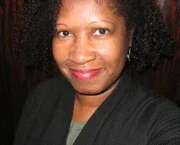If you think of some of the most well-known companies and brands, you can probably think of a favorite commercial or two from over the years. Those silly jingles and slogans are carefully crafted to make us remember the product. Super Bowl commercials have taken on a life of their own. The amount of money spent is enormous, but the brands are counting on a greater awareness of their products.
Brand recognition takes time for even the most successful organizations to achieve. What takes even longer is maintenance of the brand over time and staying relevant in the public eye.
A recent article in The Atlantic called “‘Kleenex Is a Registered Trademark’ (And Other Desperate Appeals)” describes how companies are trying to protect the names of their trademarks by reminding the public, and journalists who write about them, that the names should not be used in a generic way. That generic usage could eventually result in loss of trademark protection.
In order for consumers to buy goods from a particular brand, they first have to know that the specific brand exists. Raising brand awareness helps generate sales and can turn a casual consumer doing some window-shopping into a paying customer who may support a brand over a lifetime.
However, the millions of dollars spent on advertising and marketing won’t matter much if a future customer is confused about what company is selling the product that they are interested in and buys a similar product from a different company than they intended. That is why trademarks are so important.
Registered trademark
Limiting and hopefully preventing consumer confusion is the reason for trademark law. According to the U.S. Patent and Trademark Office (USPTO), a trademark is “a word, phrase, symbol or design, or a combination thereof, that identifies and distinguishes the source of the goods of one party from those of others.”
While there is limited common law legal protection from using certain words, slogans and symbols to represent the brand image over the years while doing business, the greatest legal protections come from having registered trademarks. Trademarks can be registered at the state level, but federal registration provides even greater protection, especially when there is litigation involved.
Trademark business name
If someone is talking about jewelry and says that it came in a little blue box, most people might think about Tiffany. It’s very easy to see the value to trademark a business name like Tiffany and different variations. Even colors can be trademarked in some circumstances. “TIFFANY BLUE BOX” and the color “TIFFANY BLUE” are trademarks of Tiffany (NJ) LLC.
Legal protection for every organization’s intellectual property includes not only knowing how to trademark a business name, but making sure to trademark a logo and trademark a slogan that might be used to sell the products as well. Bringing together different parts of an organization that may not usually work together for a brainstorming session could prove to be valuable. To trademark a name, the marketing department, advertising department and legal team could all help support the organization by bringing their own areas of expertise to the table.
For a small business, that might only be two or three people, but the common goals of keeping the brand alive and legally protected are important ones.
Legal protection beyond the name
Non-traditional marks to be obtained can include certification marks that certify a particular feature of a product. One example is a mark that the goods come from a certain geographic region. “State of Vermont Pure Maple Syrup” is a trademark.
Sounds can also be trademarked. You can probably easily summon to mind the sound of: the NBC Chimes, the MGM Lion, Intel Inside and the Pillsbury Doughboy giggle.
Trade dress is another protection that is especially valuable in a retail environment. The USPTO defines trade dress as, “a product’s design, product packaging, color, or other distinguishing nonfunctional element of appearance[.]” Over the years, protection has been extended to include the interior or a restaurant.
The USPTO granted Apple trade dress protection of its retail store design after a fake Apple store appeared in China. According to a Reuters article, “The store looked so authentic, even the upbeat salespeople thought they were working for Apple.”
It’s pretty clear that trademarks can be worth a great deal of money. The trademark process takes a few steps, but is worth the effort. Figure out what needs protecting and make sure that no other companies are already using the same or similar logos, slogans or brand names. The trademarks should already be in use in the stream of commerce or the organization should intend to use them in the future. Then the file the application.
The first step to trademarking your business name is to find out if it’s available. LegalZoom’s Comprehensive Trademark Search not only searches the USPTO database, but also searches state databases, corporate names, common law trademarks, Internet domain names and international trademarks.

